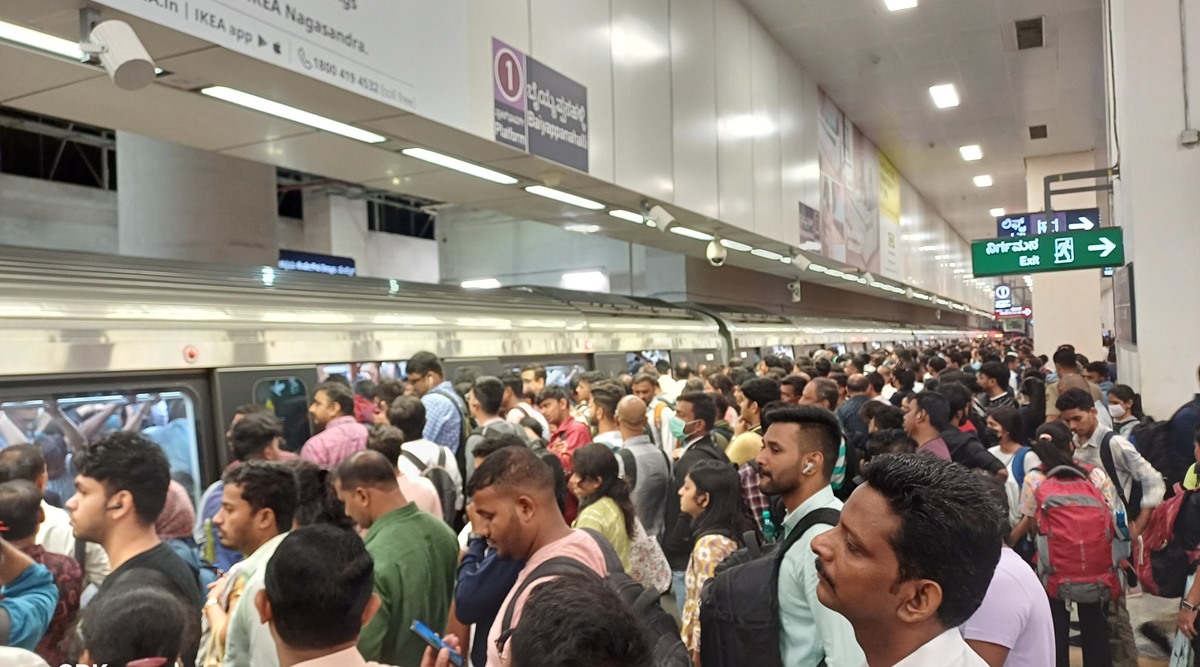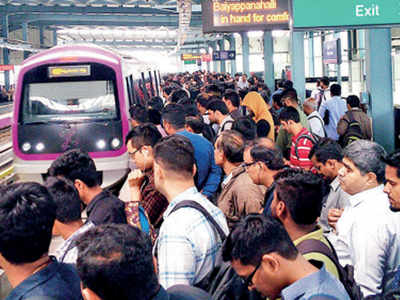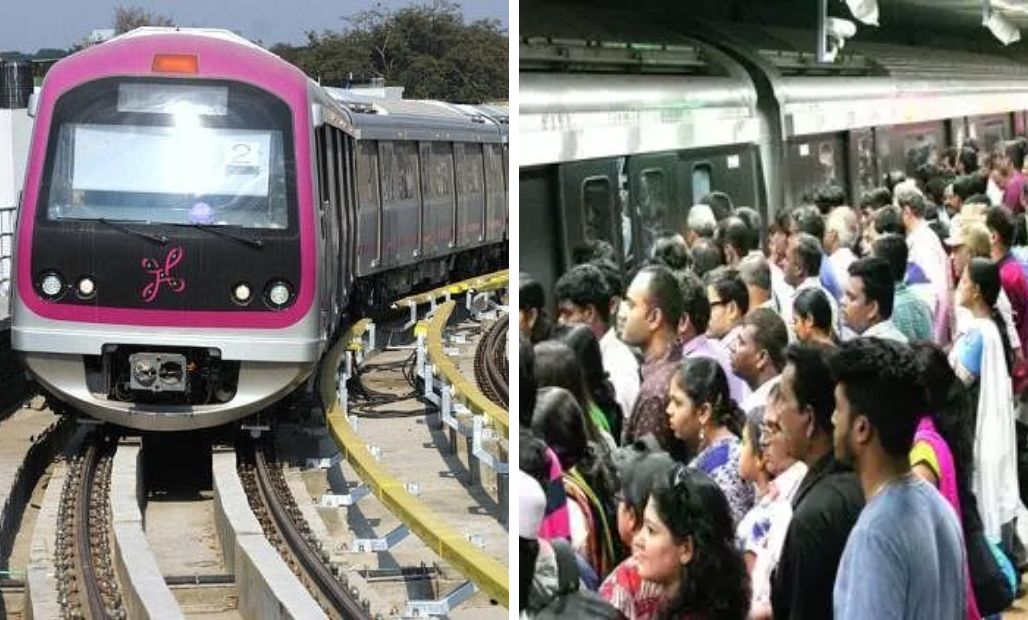The recent launch of the entire Purple line of the Bengaluru Metro has ushered in a surge in ridership, leading to concerning scenes of overcrowded trains. Social media platforms have been inundated with visuals of packed coaches, with passengers struggling to find space and resorting to unconventional methods to accommodate themselves.

Source: The Indian Express
In the aftermath of the commencement of the complete Purple line operations, a six-second video capturing the crowded conditions inside Bengaluru Metro trains began circulating on social media. The video, originally shared by a local resident and later reposted by ‘Indian Tech & Infra,’ quickly gained traction, amassing over 1.3 million views on the platform. Scenes of women struggling to fit through the doors and clinging to side handles highlighted the severity of the overcrowding issue, prompting concerns among the public.
The video triggered a deluge of comments from internet users, with many drawing comparisons to the crowded compartments of Mumbai’s local trains. Discussions on the need for comprehensive urban planning and robust public transportation systems surfaced, emphasizing the importance of anticipating future demands and planning accordingly. Observations regarding the burgeoning population of Bengaluru and the challenges associated with managing the city’s growth underscored the pressing need for effective public transport solutions.

Source: Public TV English
The launch of the Purple Line, inaugurated by Prime Minister Narendra Modi on October 20, witnessed a remarkable surge in ridership, recording a footfall of seven lakh commuters within just two days. This influx of passengers has strained the existing infrastructure and highlighted the need for better management of passenger flow and enhanced service delivery. The unprecedented rush has prompted discussions on the importance of balancing rapid urban development with the sustainable expansion of public transportation networks.
Amidst the challenges posed by the overcrowding, voices advocating for robust public transport solutions have gained momentum. The necessity for strategic planning that anticipates the future needs of a growing metropolitan city like Bengaluru has become evident. As the city grapples with the immediate implications of increased ridership, there is an urgent call for comprehensive measures to address the overcrowding woes and ensure a seamless travel experience for all commuters.

Source: Times of India
With the unprecedented surge in ridership and the challenges posed by overcrowding, the authorities responsible for the Bengaluru Metro face the critical task of enhancing the capacity and efficiency of the system. It is imperative for the management to undertake measures that not only address the immediate concerns but also lay the groundwork for a sustainable and reliable public transportation system that caters to the evolving needs of the city’s residents.





















































































